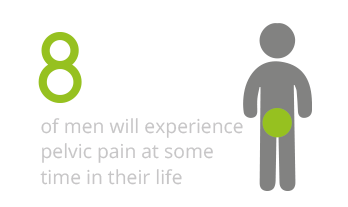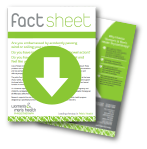Chronic Pelvic Pain
Do you have anal, penile or testicular pain?
Do you have pelvic or low abdominal pain, bladder irritation or pressure?
Does pain make it hard for you to sit for long periods?
Chronic pelvic pain is a hidden problem. It can't be seen, it’s hard to diagnose and often men suffer for many years before finding help. Chronic pelvic pain in men is more common than you think and is very distressing, both physically and emotionally.
If you have difficulty relaxing your pelvic floor muscles they can become chronically tense and overactive. Tense, tight pelvic floor muscles are painful and can lead to ongoing pelvic, sexual and bladder pain. It’s like having a headache in the pelvis.
You may have been diagnosed with chronic prostatitis or painful bladder syndrome. In most of these cases the pelvic floor muscles are tight and painful.
Common Symptoms:
• Pain when you are sitting
• Pain in the anus, testes or penis
• Pain with erection, ejaculation or orgasm
• Involuntary pelvic floor spasm
• Pain when you have a full bladder
Possible Causes Of Chronic Pelvic Pain:
• Tense tight pelvic floor muscles
• Irritation, injury or compression of a nerve
• Infection of the prostate or bladder
• Injury or trauma to the area
• Genetic factors
• Psychological factors such as mood, relationship issues or past abuse
• Lifestyle factors such as high stress and little time for relaxation
• Overuse of core muscles
How We Can Help:
Our experienced Physiotherapists understand this complex problem and will work with you to improve this important aspect of your life. At Women's & Men's Health Physiotherapy we know how to help you understand and reduce your pelvic muscle tension and pain to improve your quality of life. We work closely with your referring doctor and other health professionals to achieve these goals.
What To Expect:
• A thorough assessment to establish your goals, pelvic floor requirements and treatment plan
• Design of a personalised pelvic floor muscle exercise program to relax and release your overactive pelvic floor muscles
• Manual therapy techniques to relieve the pelvic floor muscle pain
• Support to understand the relationship between your pain and emotional and physical health
• Education regarding chronic pain and the role of the brain including practical lifestyle advice
To Learn More:
Our director, Shan Morrison presented to the Pelvic Pain Foundation of Australia Health Practitioner Training Seminar in 2018 about Male Pelvic Pain. In the presentation, she talked about the diagnosis and management of pelvic pain and the challenges men face with this condition. The presentation is available to watch here.
Did You Know













